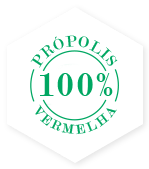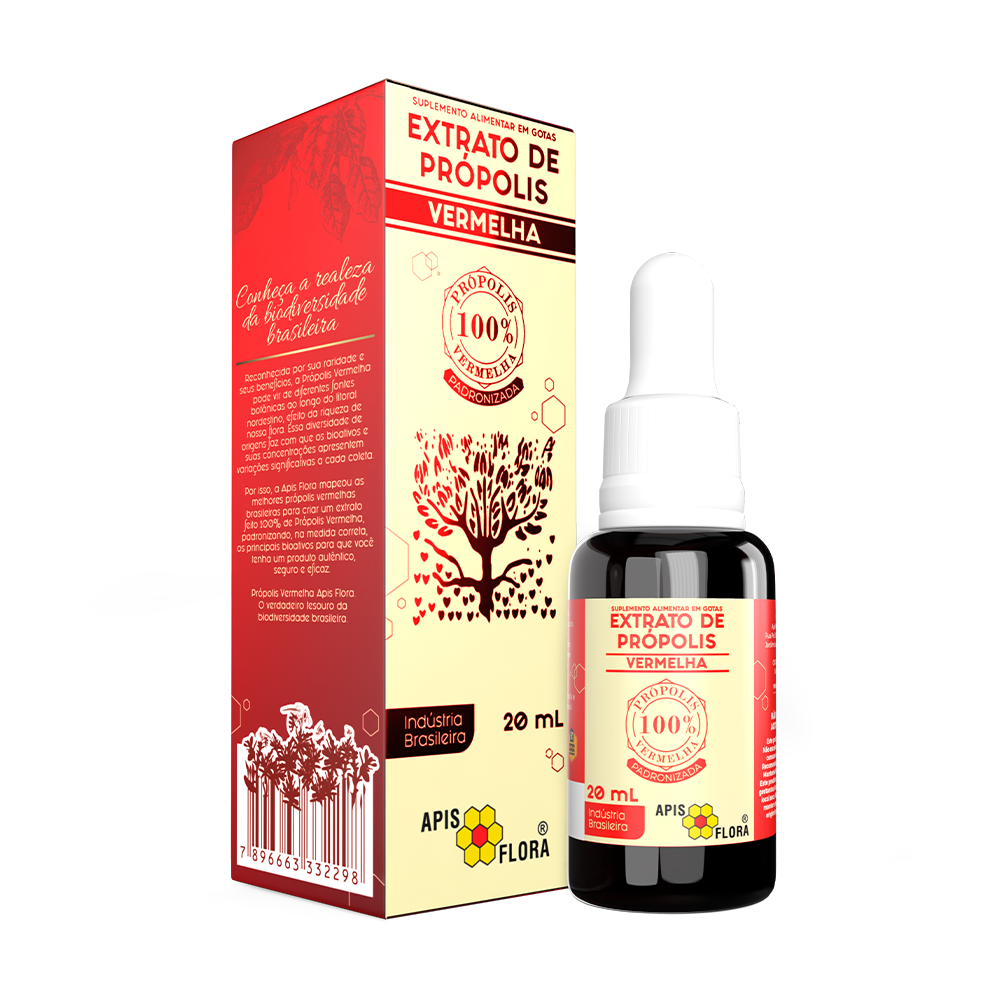Pesquisa

Apis Flora's Red Propolis Extract is an alcoholic extract produced exclusively from red propolis, derived from native Brazilian plants, Dalbergia ecastophyllum and Symphonia globulifera. The common names for these species are rabo-de-bugio or marmelo do mangue for the former, and anani or guanandi for the latter.
It is made with 100% red propolis and features an exclusive standardization of bioactives, ensuring the quality your body needs to enjoy the product's benefits.
HOW TO USE: Take 10 drops three times daily, diluted in water, juice, honey, or another beverage of your choice, as needed. Different dosages may be recommended by your healthcare professional.



STANDARDIZED
RED PROPOLIS
Apis Flora’s Red Propolis Extract is made with 100% red propolis, and features standardized bioactives, ensuring consumers receive an authentic, safe, and effective product with the quality your body needs to enjoy the benefits of red propolis.

| Servings per container: 20 Serving size: 1 mL (30 drops) |
|||
| 1 mL | % VD* | ||
| Phenolic compounds (mg) | 25 | ||
Does not contain significant amounts of calories, carbohydrates, total sugars, added sugars, proteins, total fats, saturated fats, trans fats, dietary fiber, and sodium.
*Percent Daily Values provided per serving.

Propolis extract (alcohol, water, and red propolis) and sunflower lecithin emulsifier.
IMPORTANT INFORMATION
![]() Minimum dry extract: 11% w/v
Minimum dry extract: 11% w/v
![]() Phenolic compounds: 25 mg/mL
Phenolic compounds: 25 mg/mL
![]() Gluten-free product
Gluten-free product
![]() Recommended for individuals over 19 years old.
Recommended for individuals over 19 years old.

Red propolis originates from the Northeast region of Brazil and is derived from the plants Dalbergia ecastophyllum and Symphonia globulifera. The common names for these species are "rabo de bugio" or "marmelo do mangue" for the first species, and "Anani" or "Guanandi" for the second.
Its composition includes various chemical groups such as flavonoids (isoflavones, chalcones, and isoflavanes), pterocarpans, and benzophenones, among many other compounds still under study. The red color of this type of propolis is due to the presence of certain flavonoids found in the resin of its botanical source, Dalbergia ecastophyllum.
Red propolis has garnered significant interest due to its numerous biological activities, including cytotoxic effects against various cancer cell lines, antibacterial, antifungal, anticariogenic, antioxidant, antiproliferative, anti-inflammatory properties, among others.

